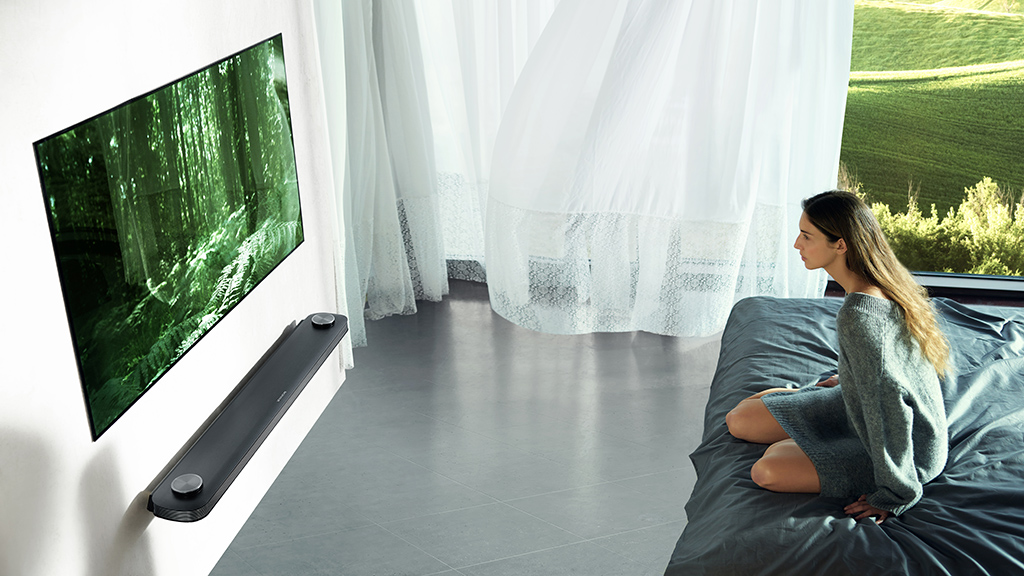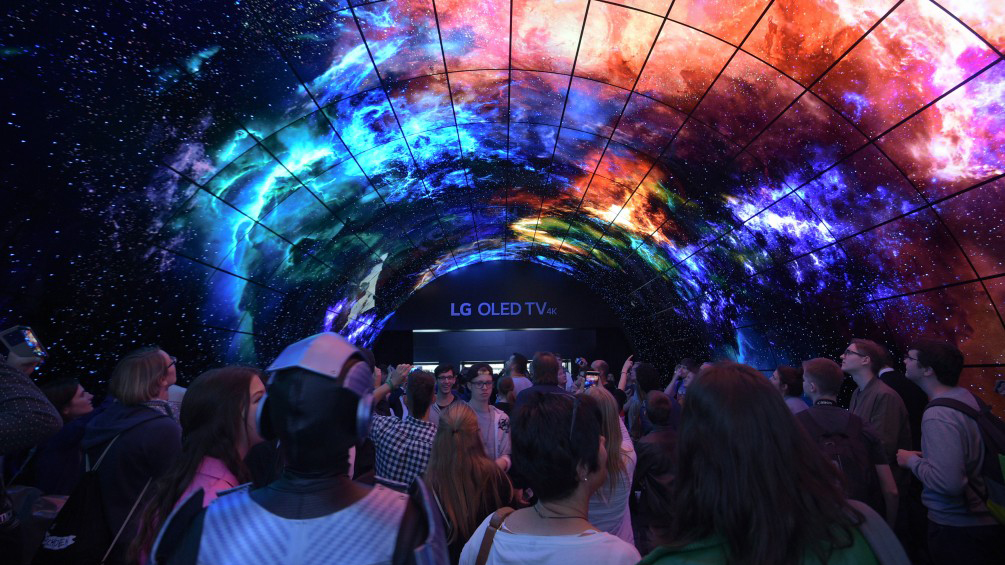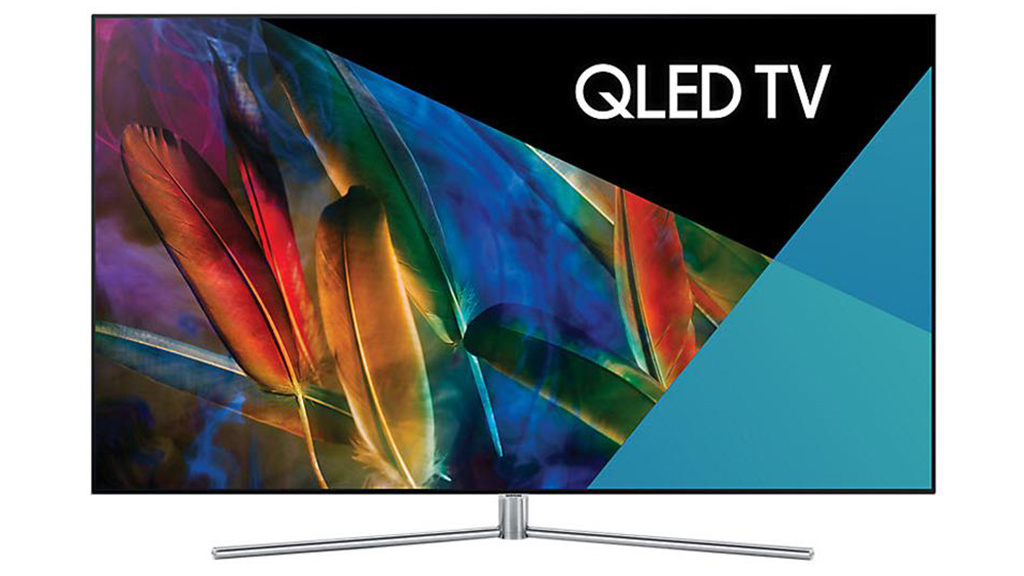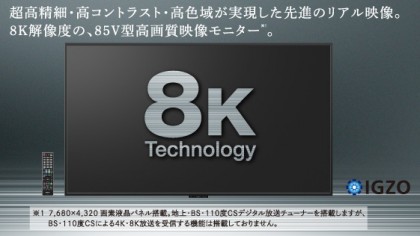Here's what's coming next for 4K TVs

The future of TV is OLED. Everyone knows that, and in the wake of the umpteen OLED TV launches at IFA 2017 in Berlin, everyone knows that for sure.
Except everyone is wrong. It may be the tech that most major manufacturers are talking about, but OLED will likely remain a niche technology for many years.
Will TVs change? Sure, but there's a whole lot more happening than OLED.
OLED will be big ... sometime down the road
Let's go over some basics first. Yes, there's no doubt that OLED technology got a massive push at IFA: Sony unleashed a 77-inch version of its A1 OLED TV, Loewe its Bild 3 and Bild 4 OLED TVs, and Bang & Olufsen its Eclipse TV.
If those weren't enough OLEDs for you, Panasonic presented its 77-inch EZ1000, Philips its 65-inch 9-series OLED TV, and even thought-to-be-past-it Toshiba popped-up at IFA with the 65-inch X97 OLED TV. And all the while, the 'OLED tunnel' – a fixture on the stand of the sole OLED display manufacturer LG's stand at trade shows for the past year or so – was wowing attendees.
So did IFA see OLED become the unquestioned dominant TV technology?

"Within the premium segment, the momentum behind OLED is gathering place as high end brands such as Loewe and Bang & Olufsen put their weight behind the technology, as well as the premium OLED offerings from larger vendors such as Sony and LG," said Simon Bryant, Associate Director at Futuresource Consulting.
Sign up for breaking news, reviews, opinion, top tech deals, and more.
But, wait, he's not done.
"OLED sets were on display from more vendors, but often they were still just prototypes," added Bryant. Still just prototypes.
He's right. Almost all of the OLED TVs 'launched' at IFA were previews of sets that are not set to go on sale until next year. Put simply, if dealers don't swallow the OLED concept – and it's a concept that means huge screen sizes and massive price tags – then many of the OLED TVs shown-off in Berlin could be dead in the water. Relatively few products unveiled at IFA and CES generally make it to market, so to talk of the inevitable spread of OLED is premature.

Cue QLED
There's also the factor that OLED lacks the support of the world's #1 TV brand, Samsung, which is instead concentrating on its own tweak to existing LCD technology, QLED. At IFA, Samsung expanded its QLED range, adding a 55-inch and 65-inch Q8F, but it wasn't the only one with new QLEDs. TCL announced its 85-inch Private Theatre XESS X6, and even insisted that at 60,000 hours, the colour lifespan of the X6 lasts two times longer than a 'regular' OLED TV.
"TCL, Hisense and Samsung, who all rank within the top five vendors, continue to resist OLED technology and are choosing to push existing LCD sets further," said Bryant. That's some pretty awesome marketing muscle, globally speaking, and it's coalescing behind the QLED Alliance created by the three brands.
"While Samsung, the world's largest TV vendor, and its large QLED alliance partners continue to resist the technology, and other vendors push it forward with dual OLED and LCD strategies, LCD will remain the go to screen technology for much of the market going forward," said Bryant.
LCD's enduring legacy
That last point is key, because of the many proponents of OLED, only Panasonic and Bang & Olufsen does so exclusively. Neither are mass-market TV brands.
Scratch below the very top-end, headline-grabbing TVs and you'll find extensive LCD line-ups. Toshiba also announced its U77 and U67 4K LCD TVs, Philips its 55-inch and 65-inch Quantum Dot 8602 Series, and even Loewe its 49-inch Bild 3.49 and 43-inch Bild 3.43 LCD TVs.
"LCD remains important due to its lower costs, higher availability and larger screen size range, meaning it is not going to be ignored or left behind by vendors anytime soon," said Bryant. "Even LG, the driving force behind OLED, had a large area of the booth showing off its latest LCD technology and the benefits that come with it versus conventional LCD."
Even the biggest name in OLED isn't ready to give up traditional LCDs just yet.

8K and an influx of new features
Perhaps the biggest shock at IFA was the now Foxconn-backed Sharp's announcement that it plans to sell the world's first 8K TV in Europe in 2018.
Part of its historic AQUOS Series – which once saw the birth of the first LCD TVS – Sharp will put a 7680 x 4320 pixel resolution on a 70-inch LCD TV in March. With the 2020 Tokyo Olympics approaching, which host broadcaster NHK plans to air in 8K, Sharp wants to get its act together.
But higher resolutions are only one part of the roadmap: As TVs become bigger ands better, there's a trend towards hiding them altogether. Look at Samsung's The Frame line-up of 'hidden' TVs that display works of art and photographs, provides some evidence for that.
Even though they're not TVs, ultra-short-throw laser projector at IFA 2017 from like Epson's EH-LS100 can put a 130-inch image on a wall from 6cm, while LG's Pro Beam HF85JA can project a 100-inch image from 12cm.
The display market is all about price and popularity – it always is – and that's exactly why, when talking about TV's future and new TV products, we must remember to do one thing: always forget the flagships.
- Don't miss our round-up of the best 4K TVs
- Check out the latest cheap 4K TV deals

Jamie is a freelance tech, travel and space journalist based in the UK. He’s been writing regularly for Techradar since it was launched in 2008 and also writes regularly for Forbes, The Telegraph, the South China Morning Post, Sky & Telescope and the Sky At Night magazine as well as other Future titles T3, Digital Camera World, All About Space and Space.com. He also edits two of his own websites, TravGear.com and WhenIsTheNextEclipse.com that reflect his obsession with travel gear and solar eclipse travel. He is the author of A Stargazing Program For Beginners (Springer, 2015),